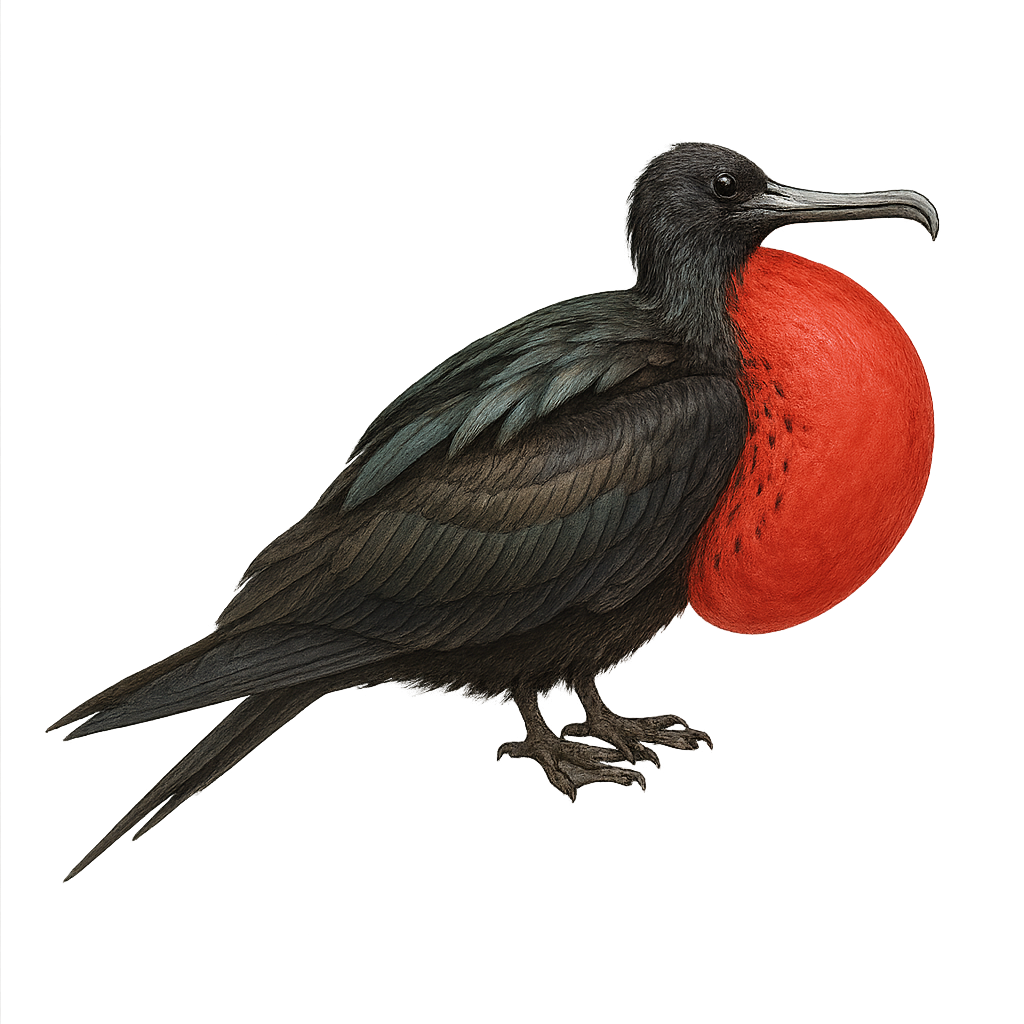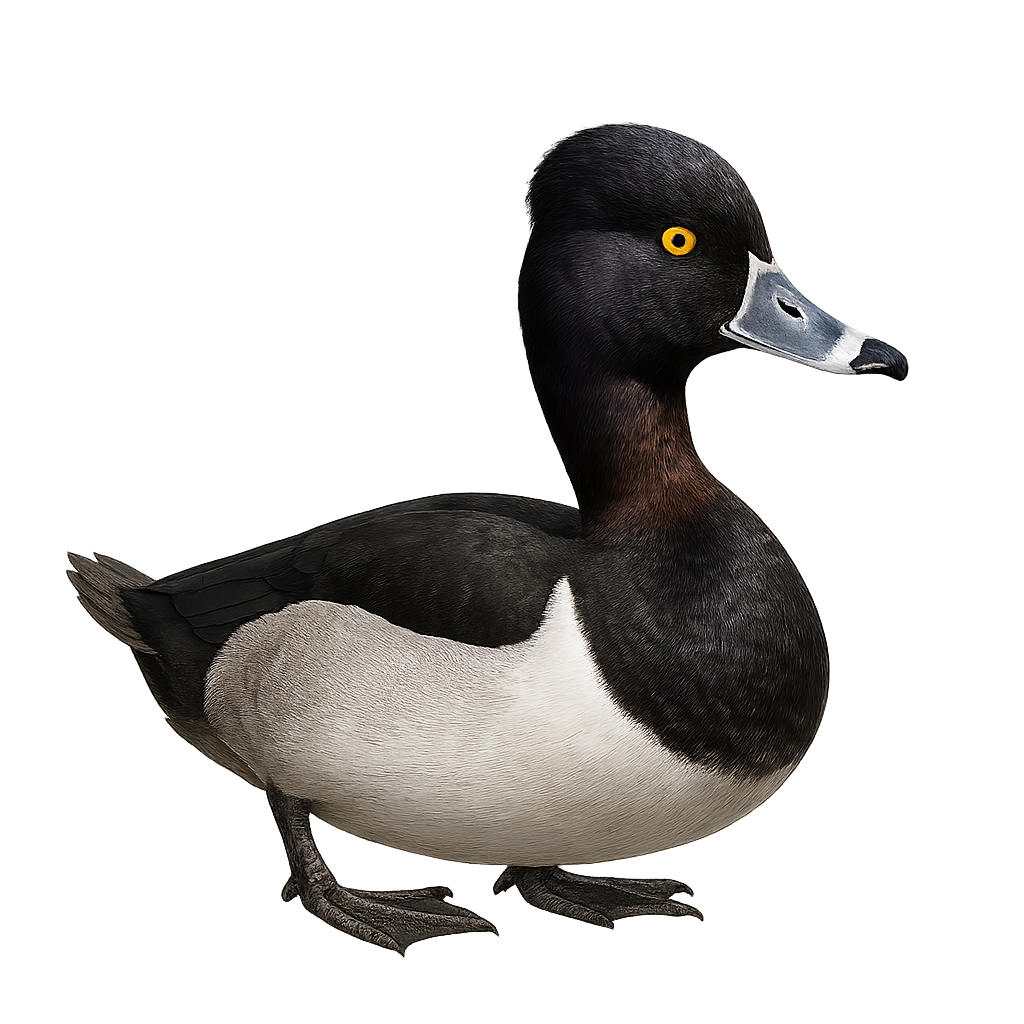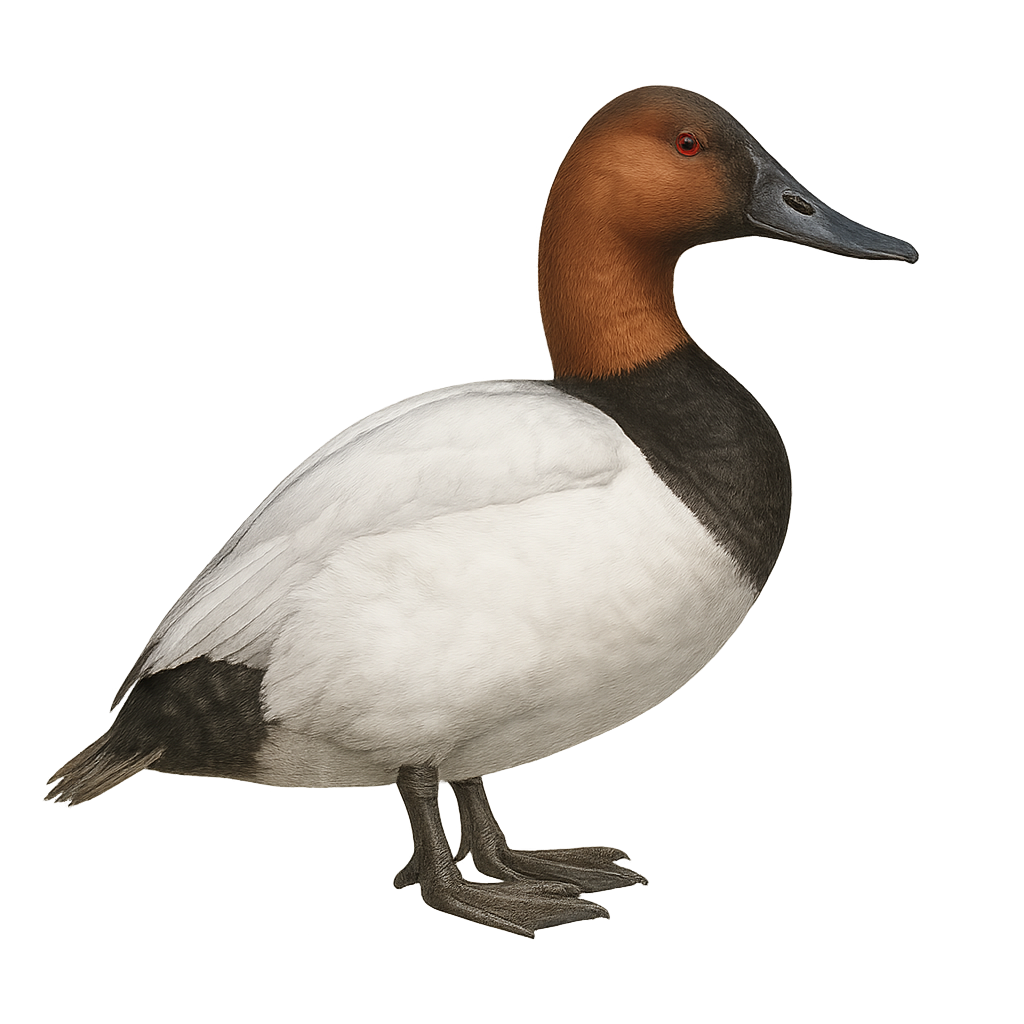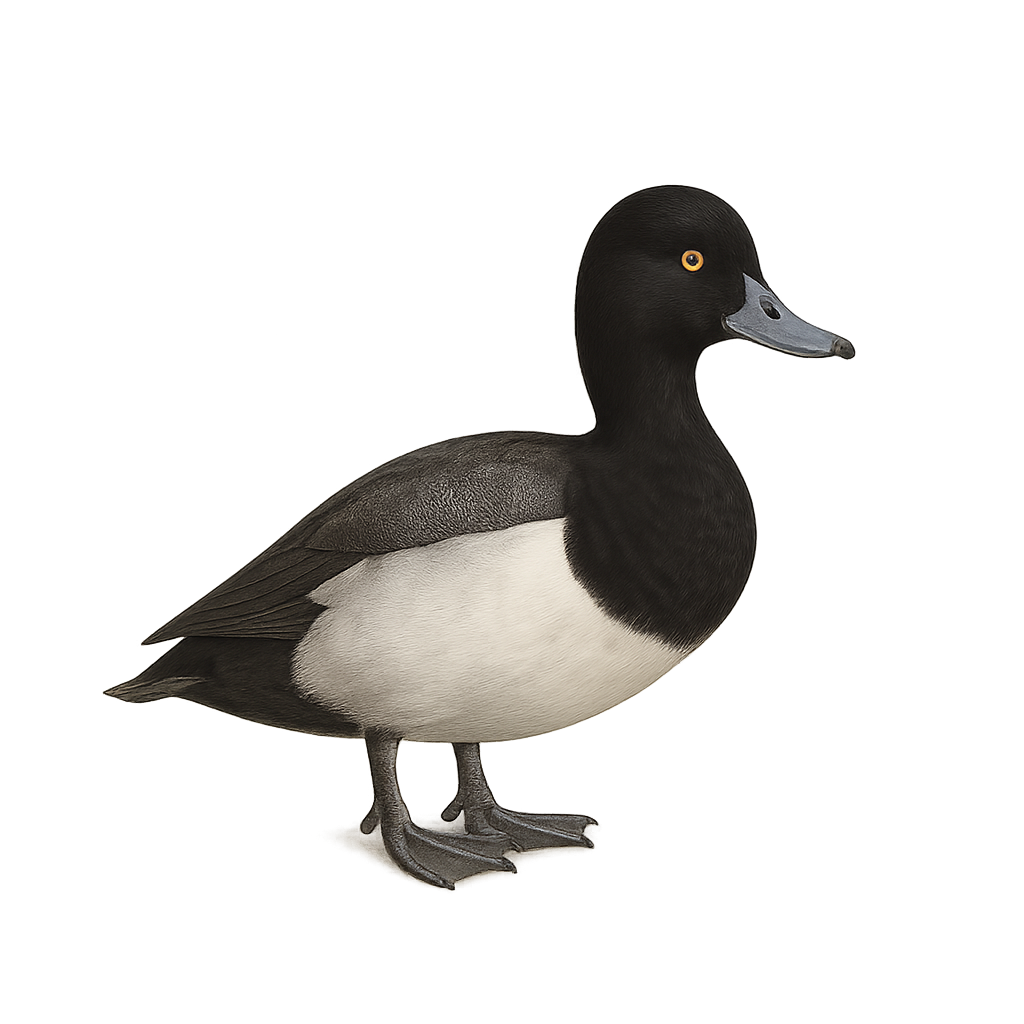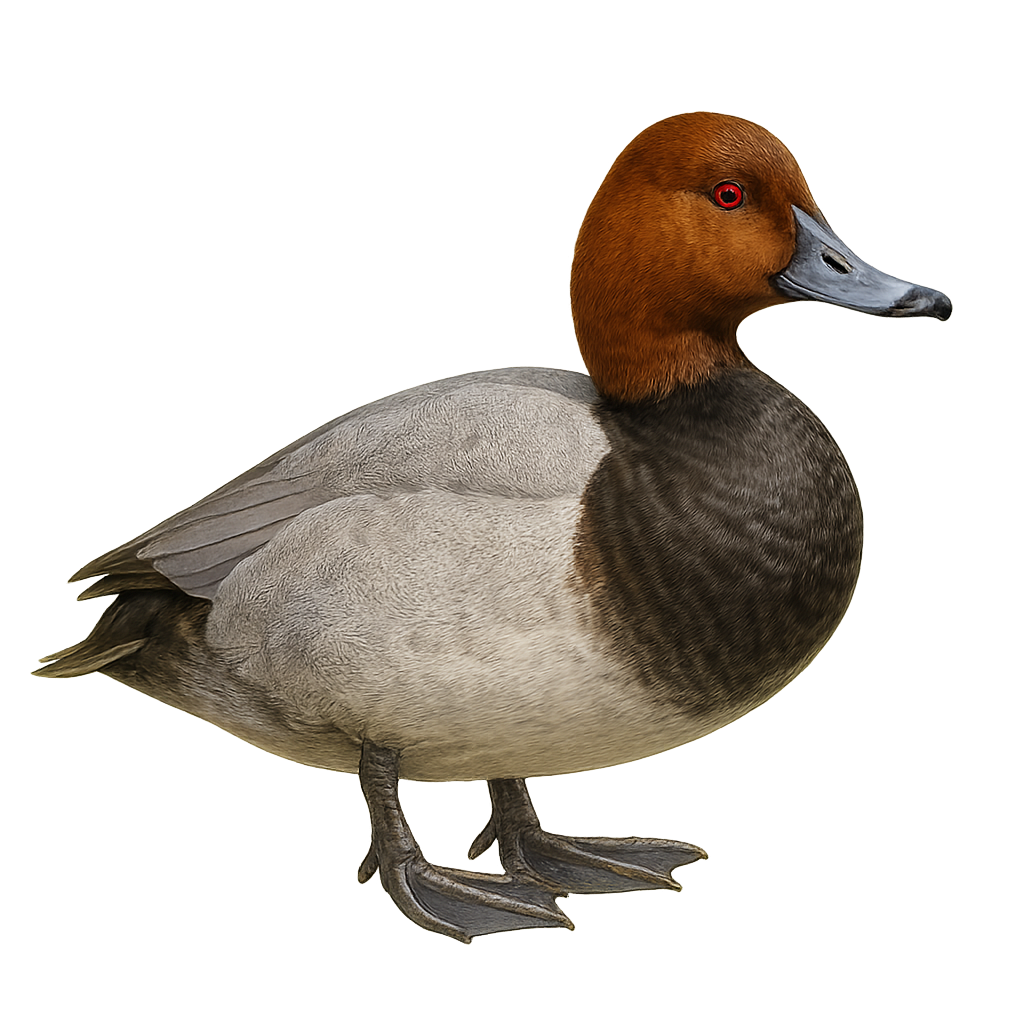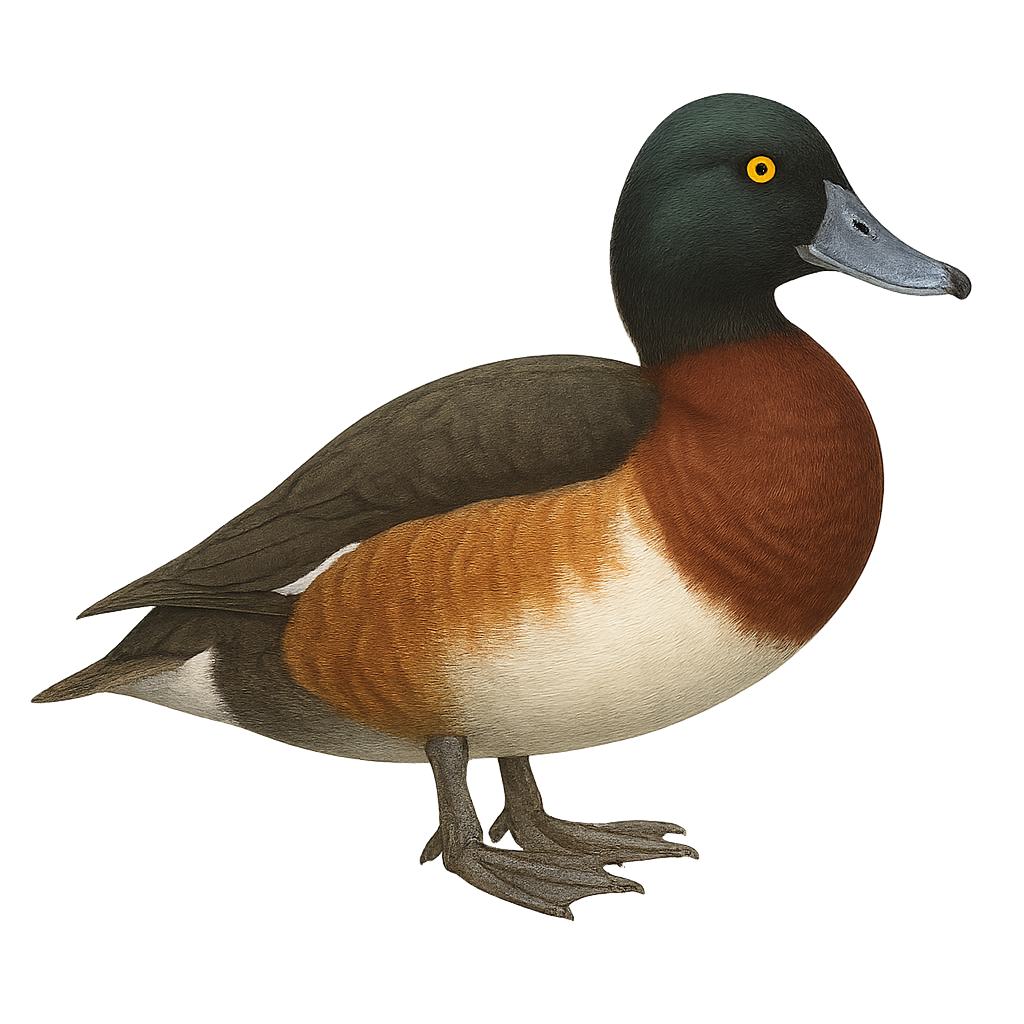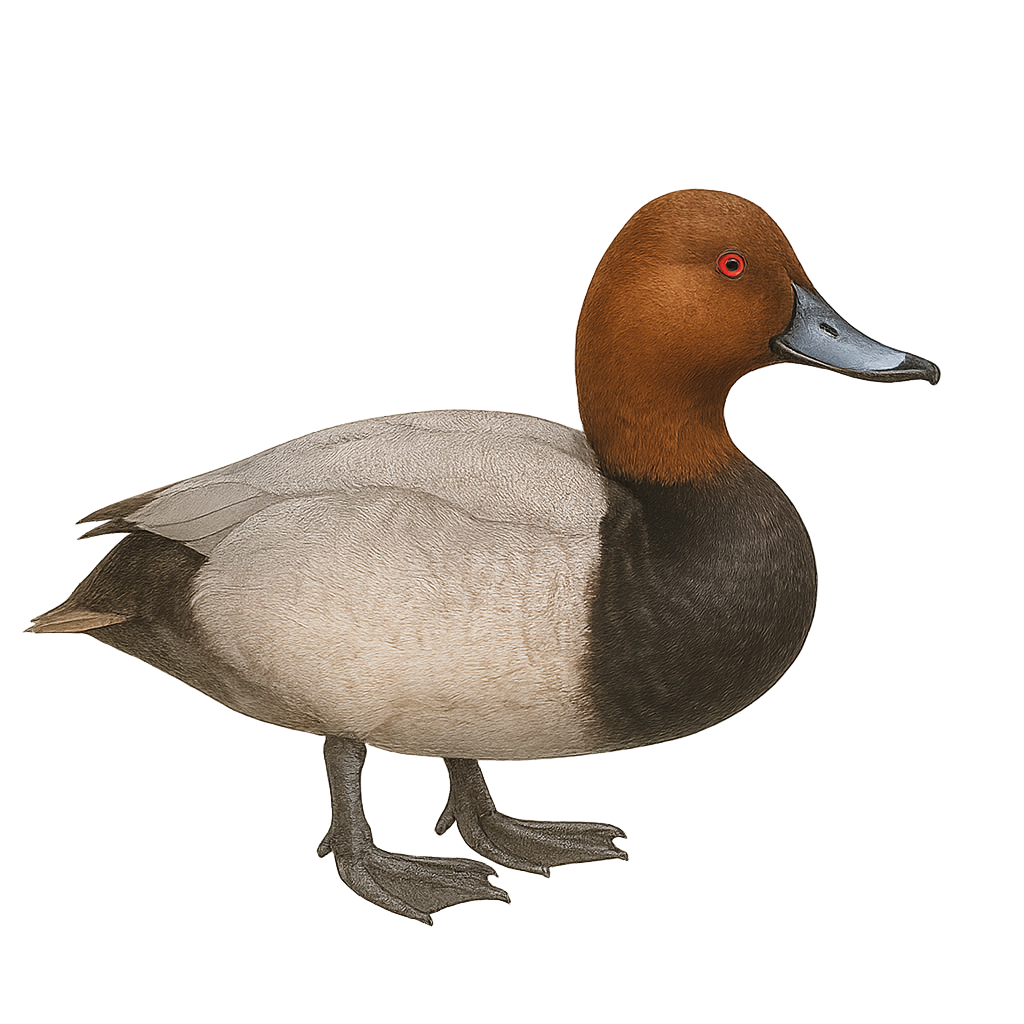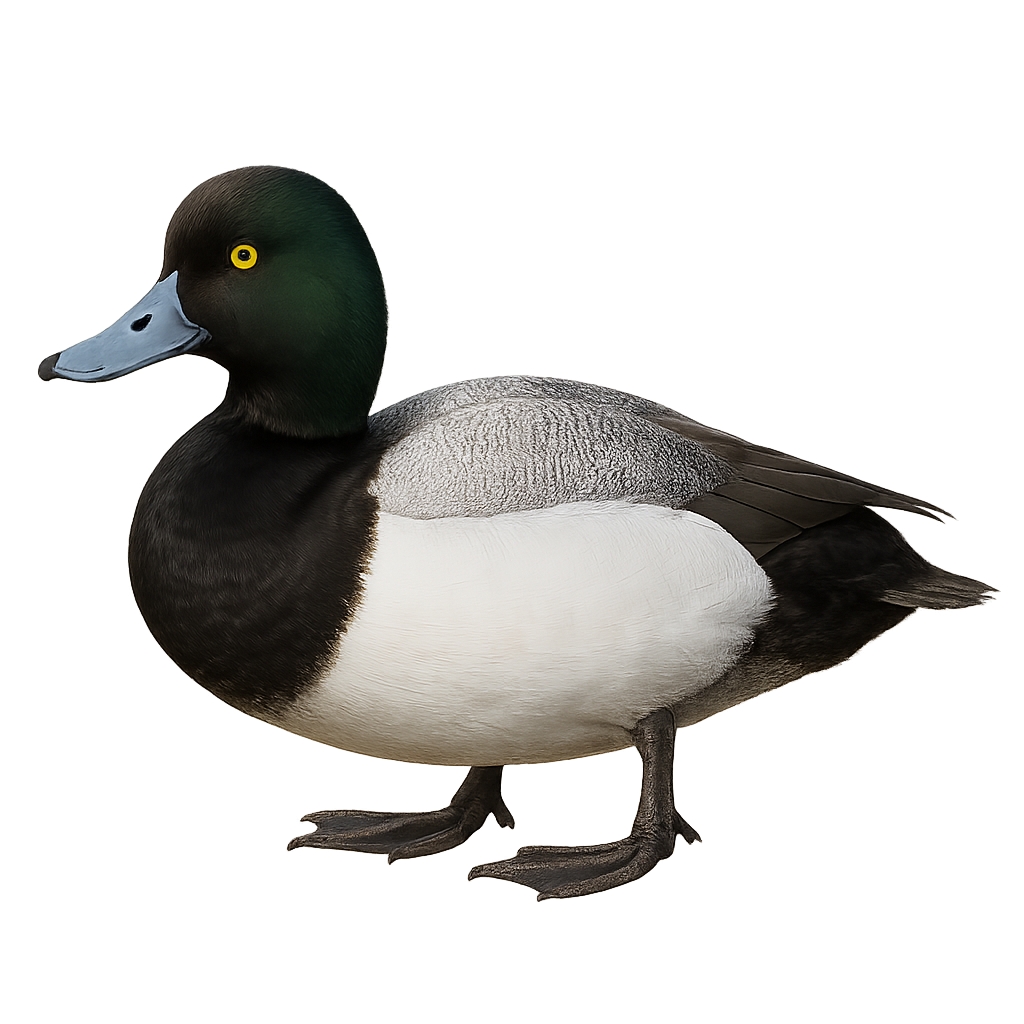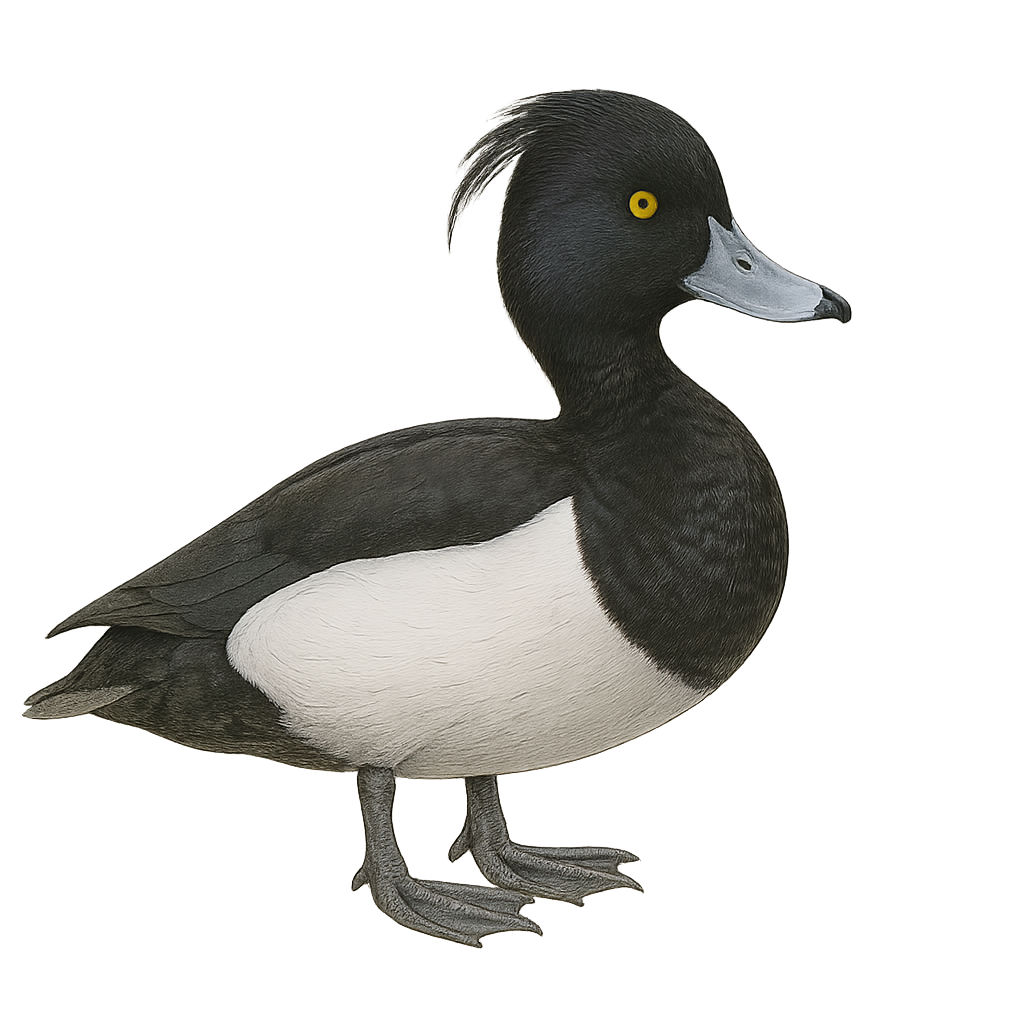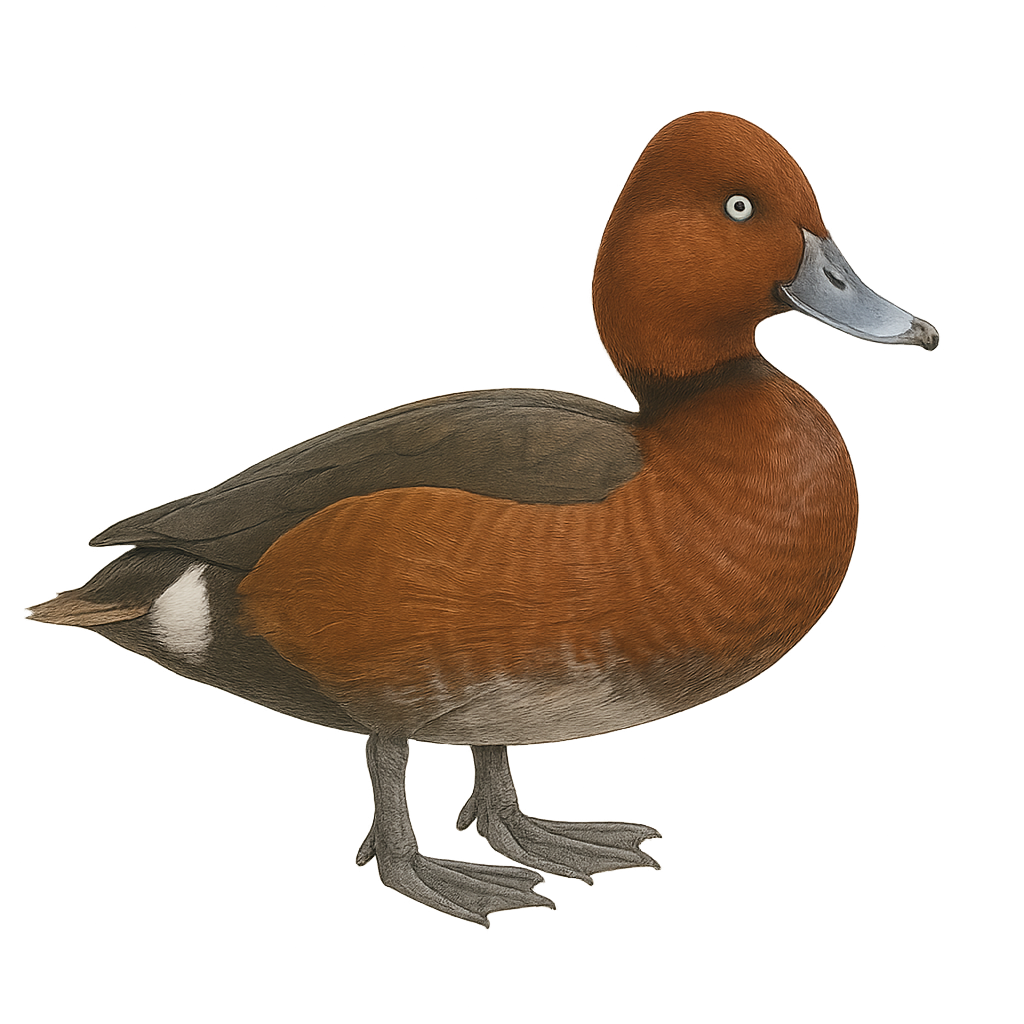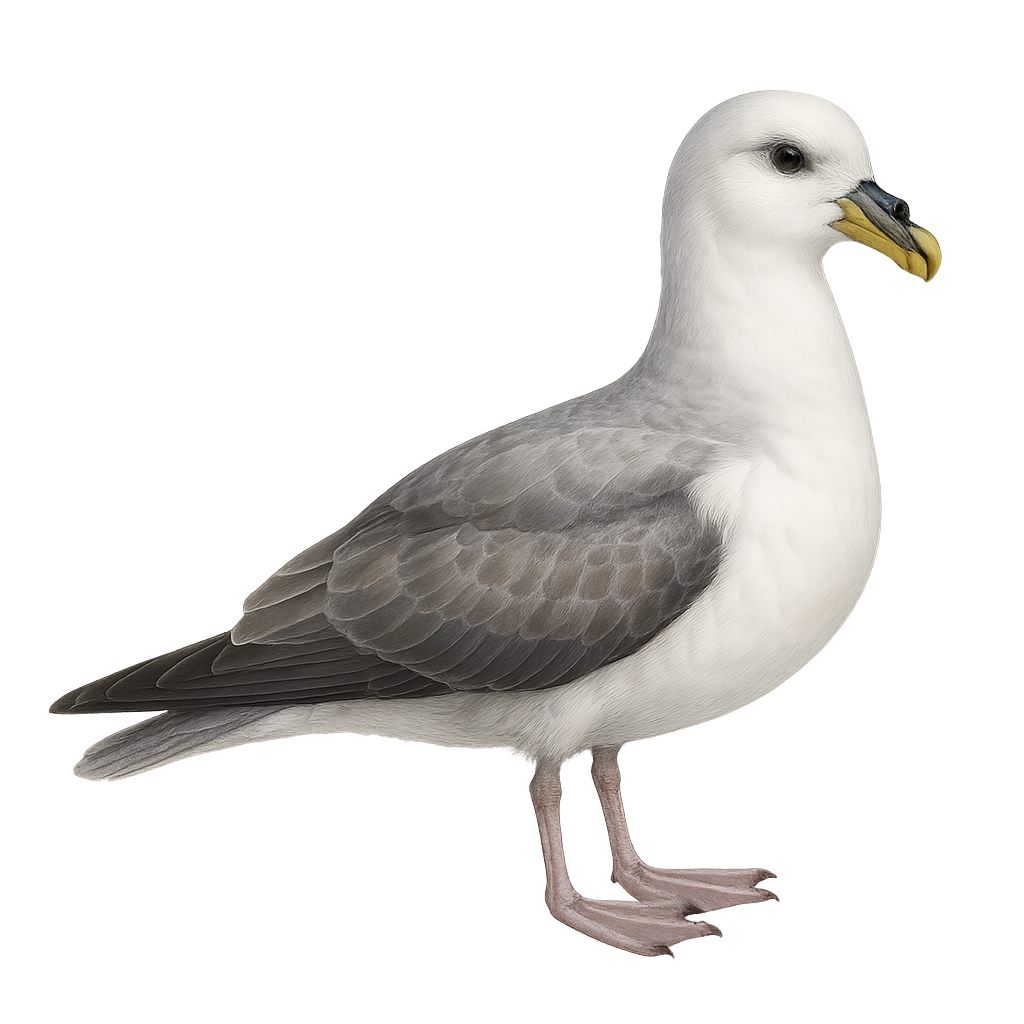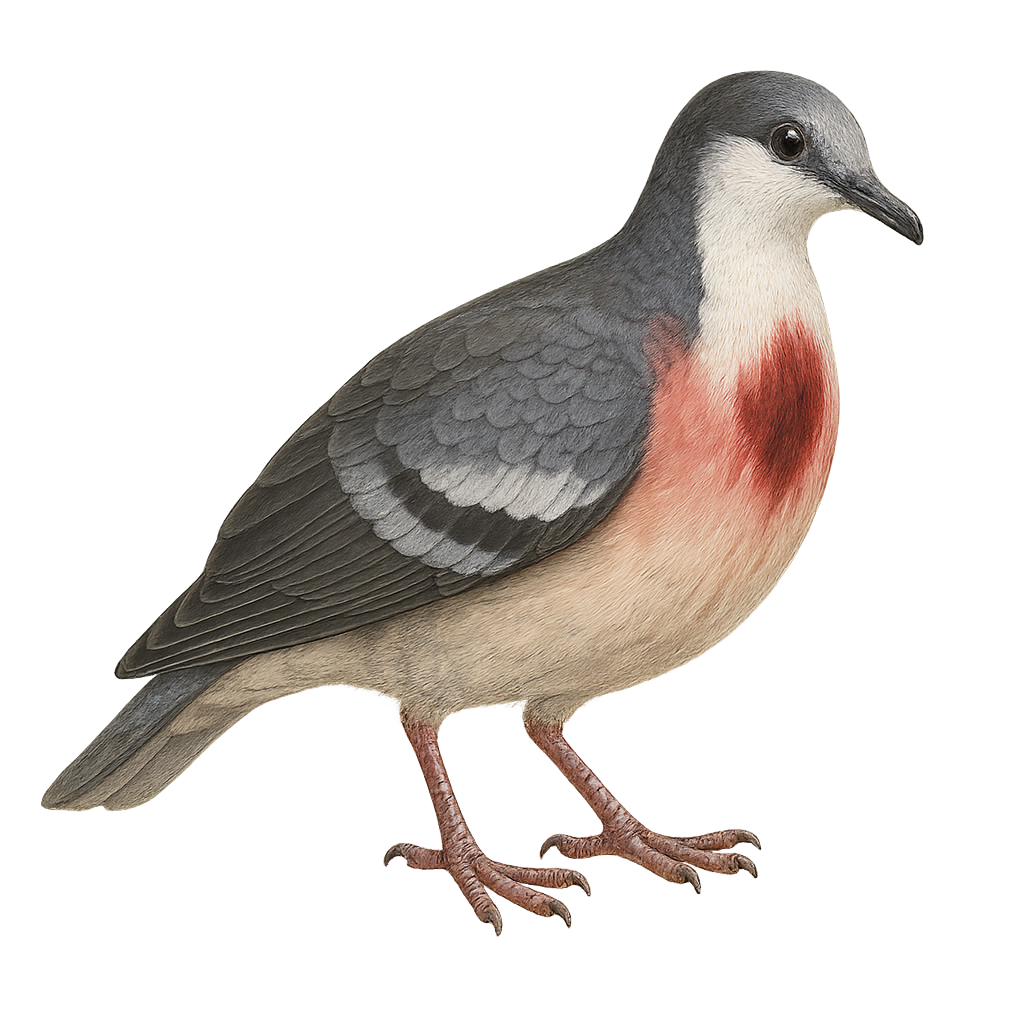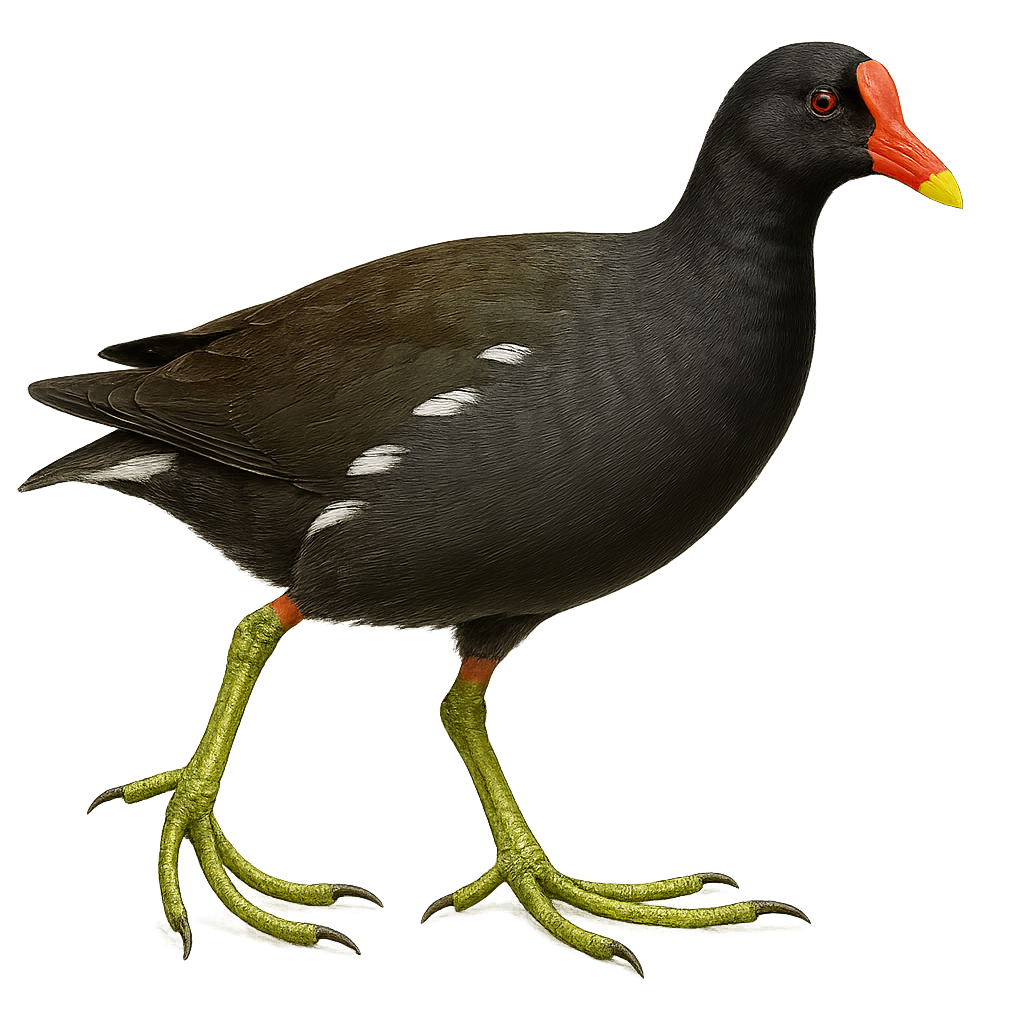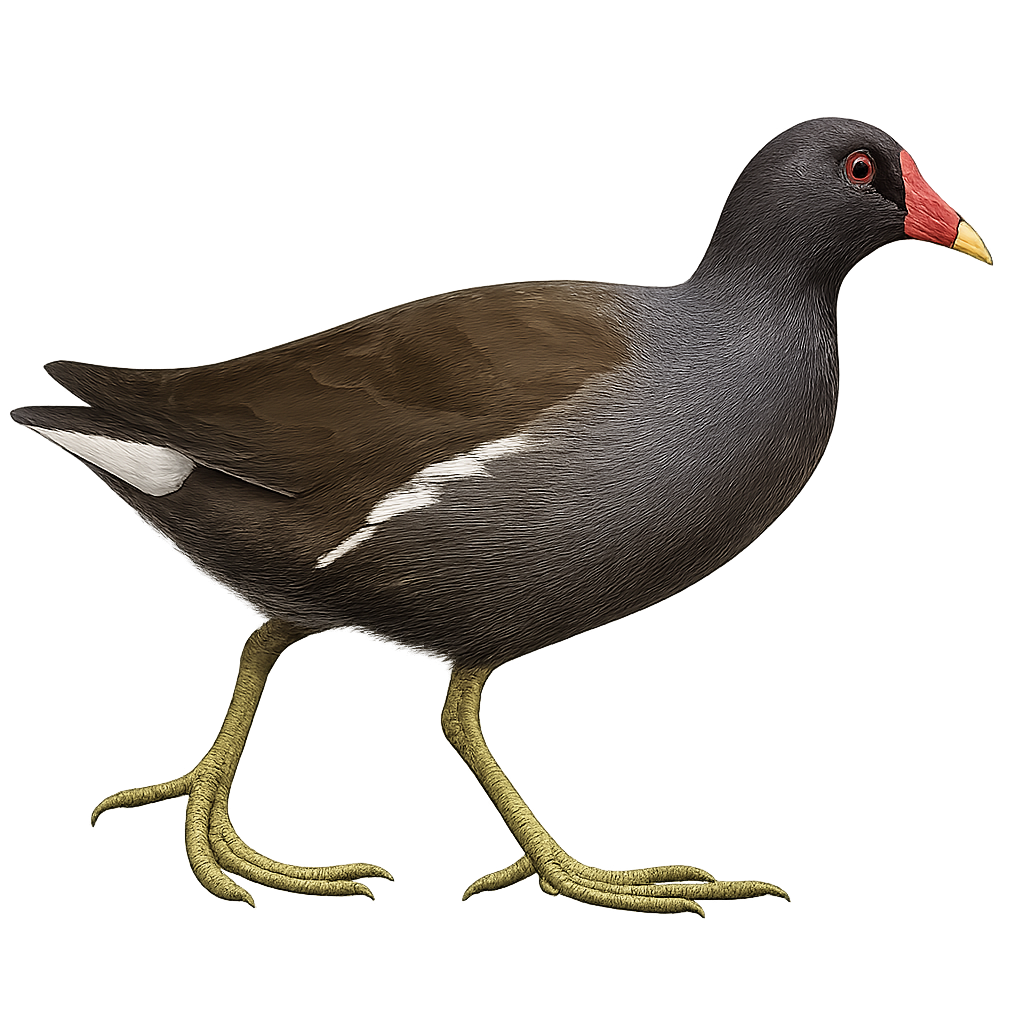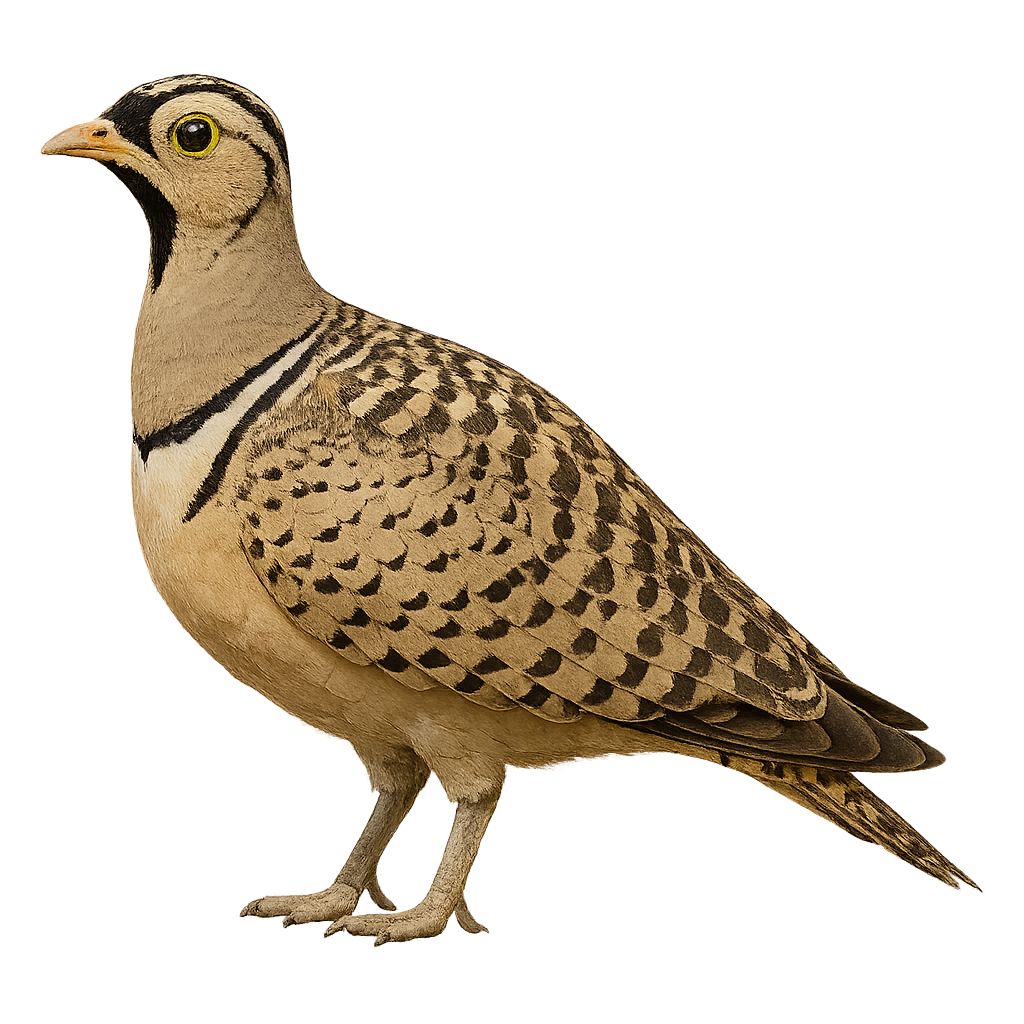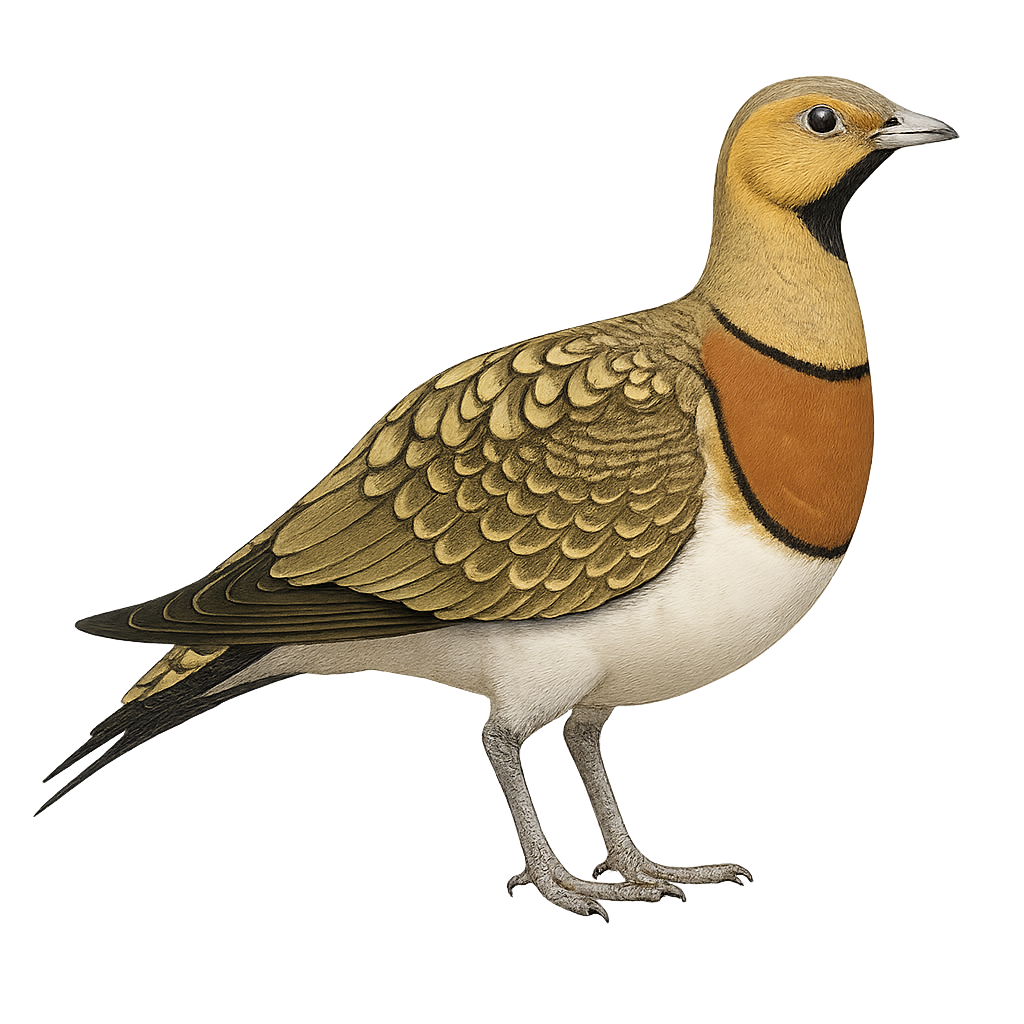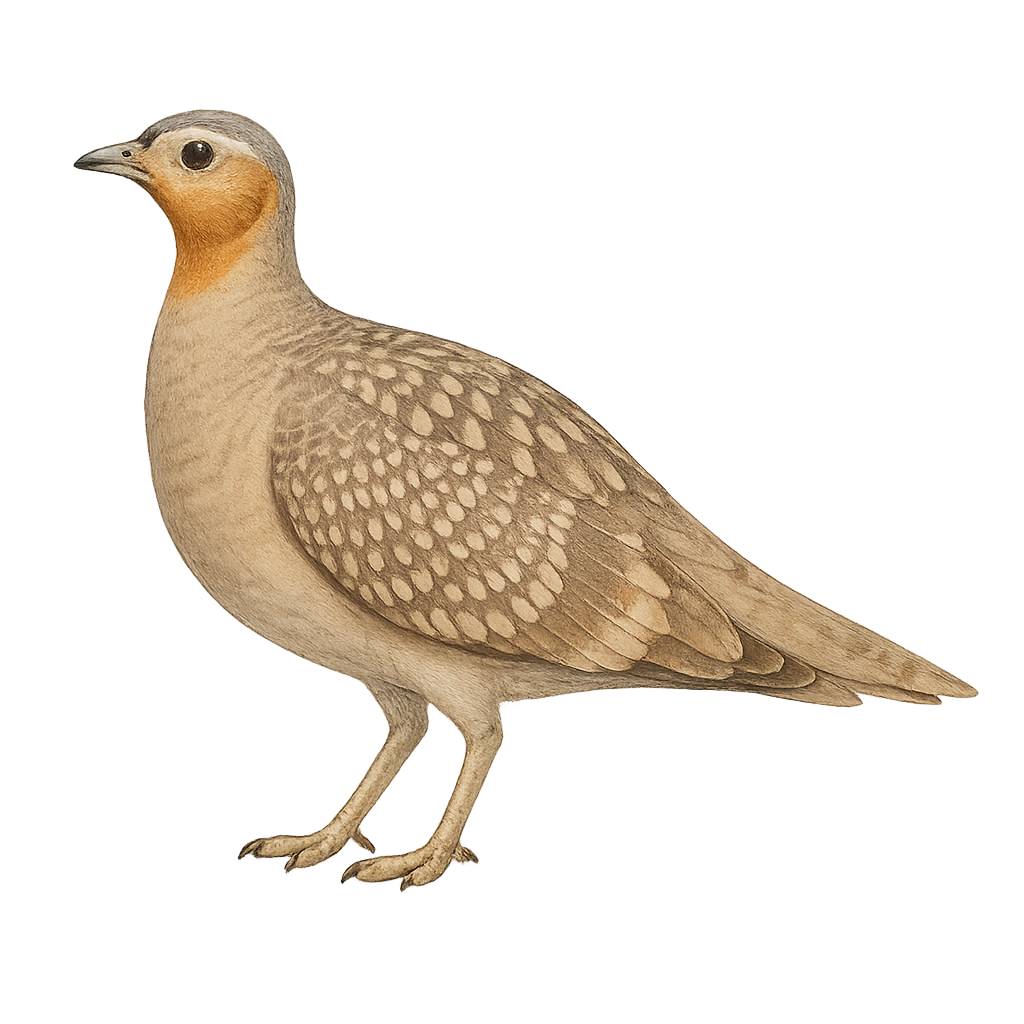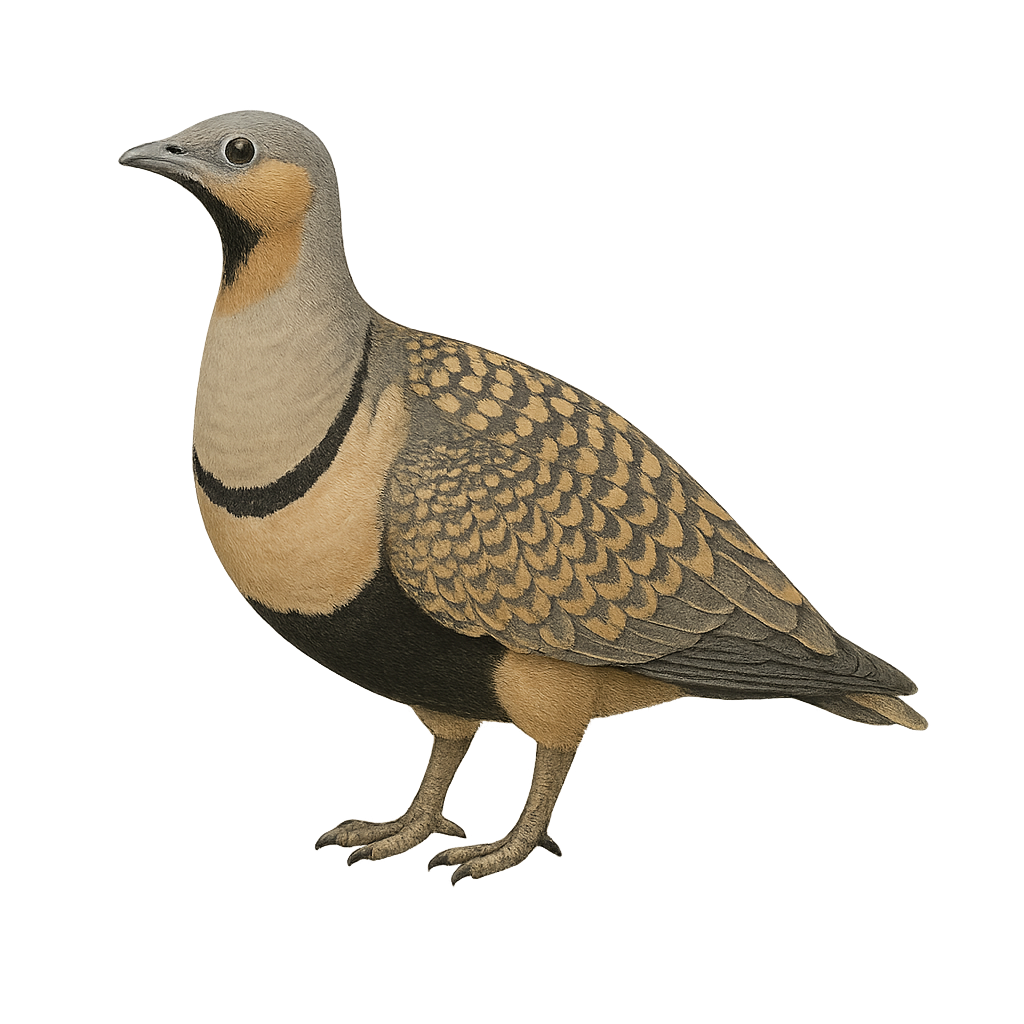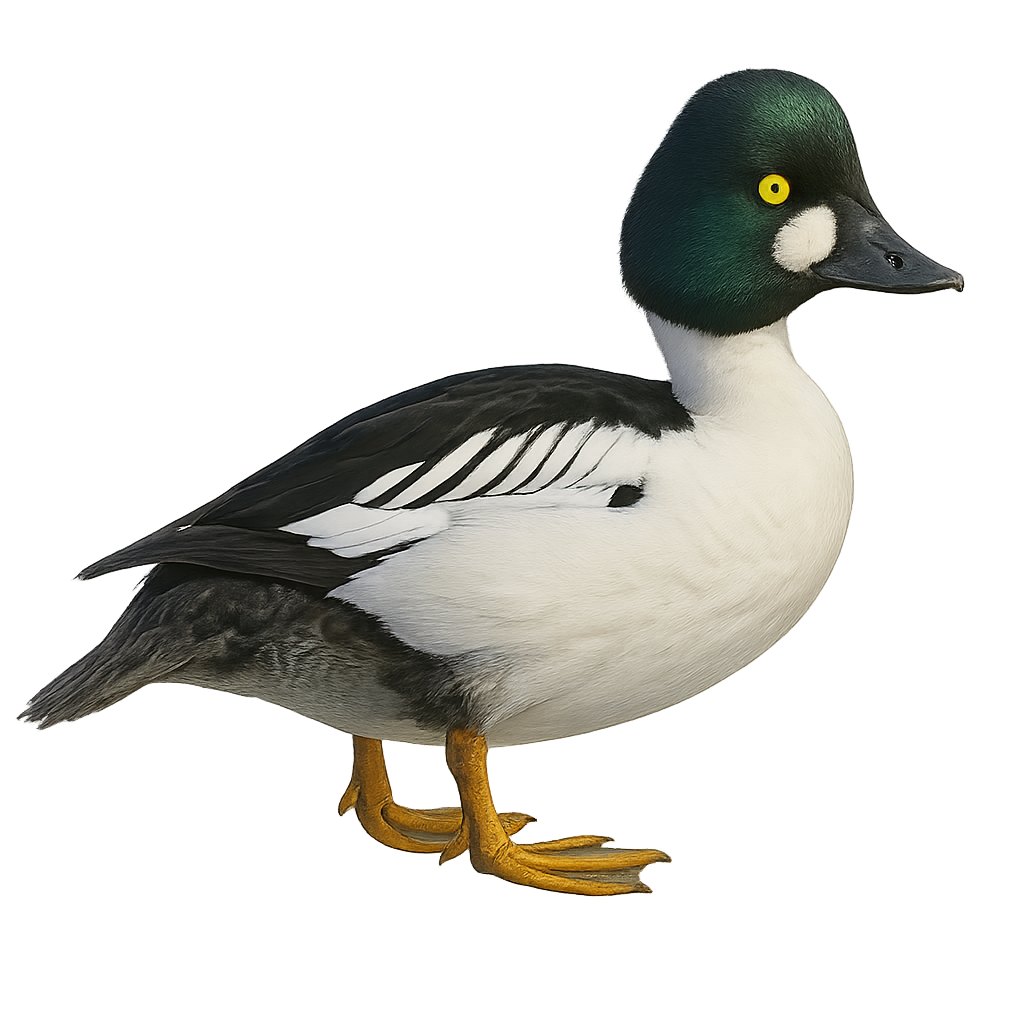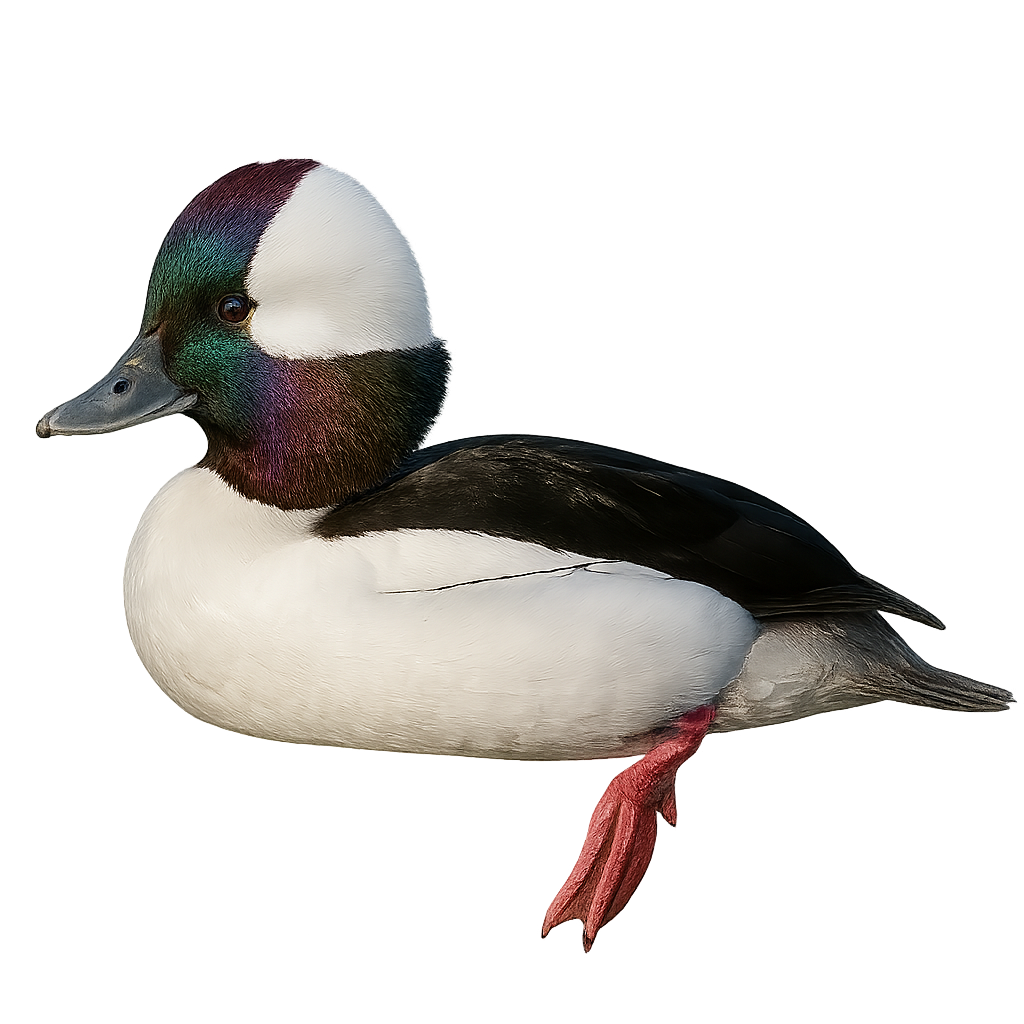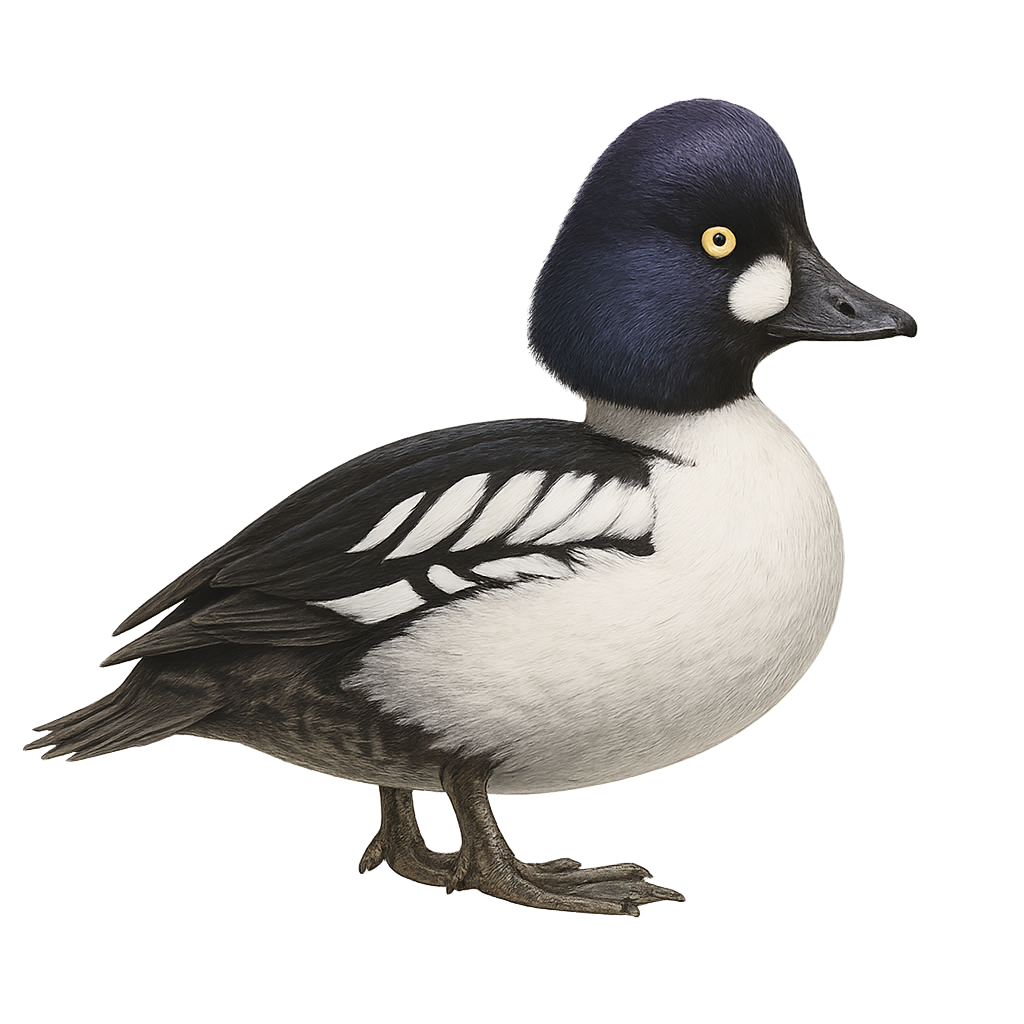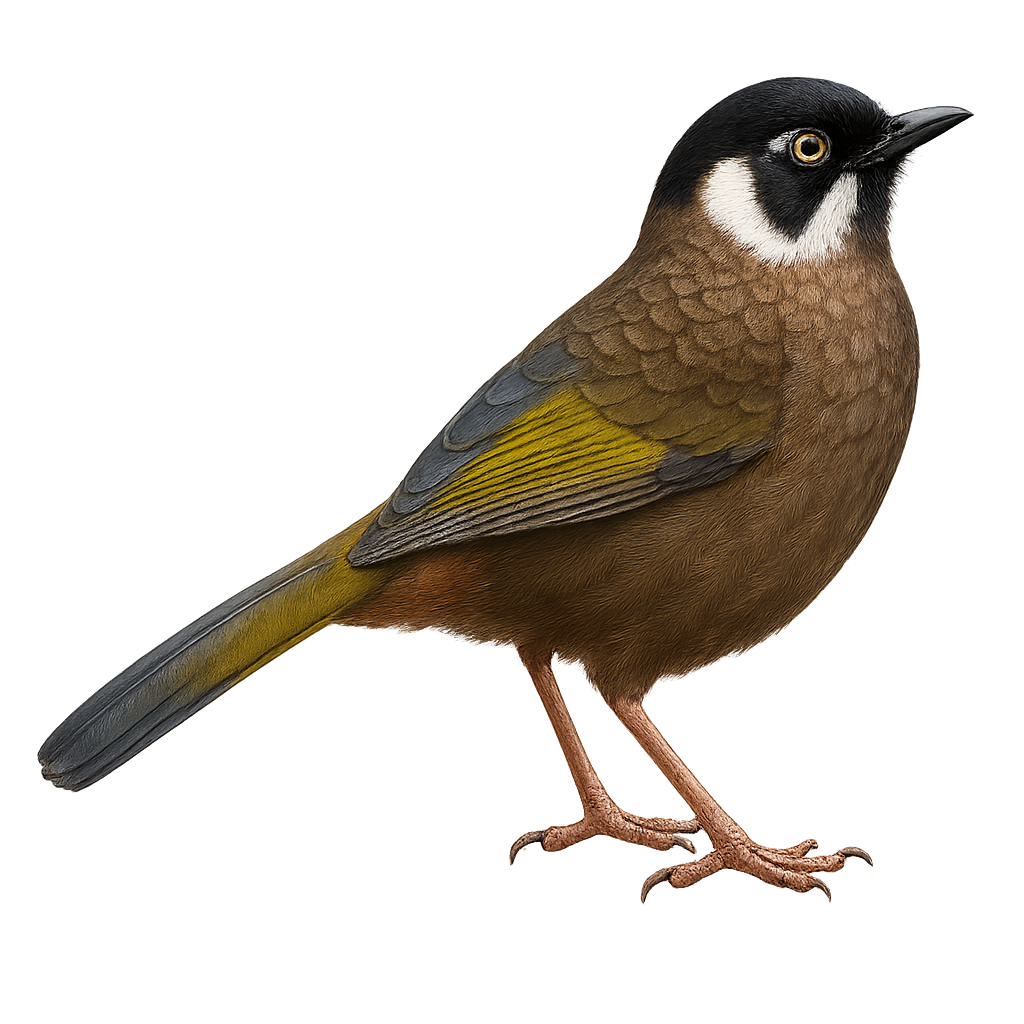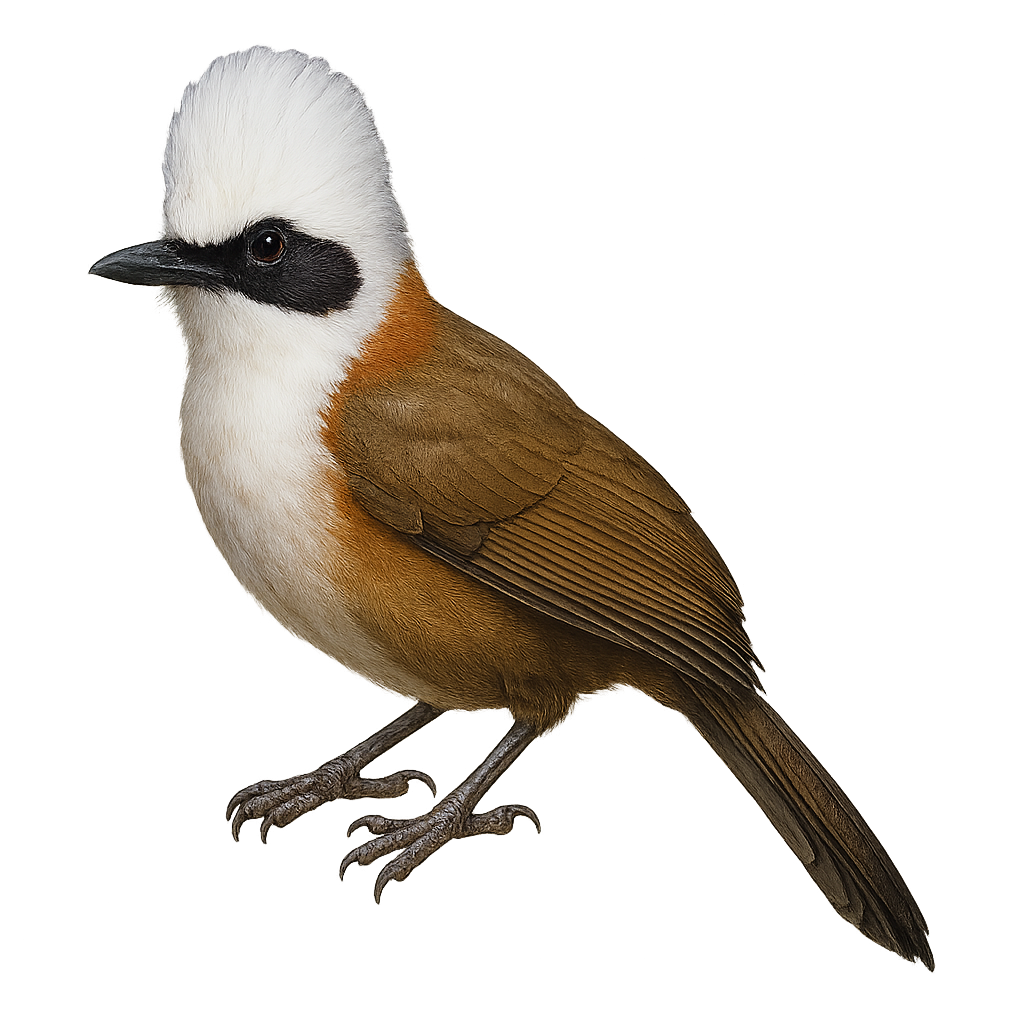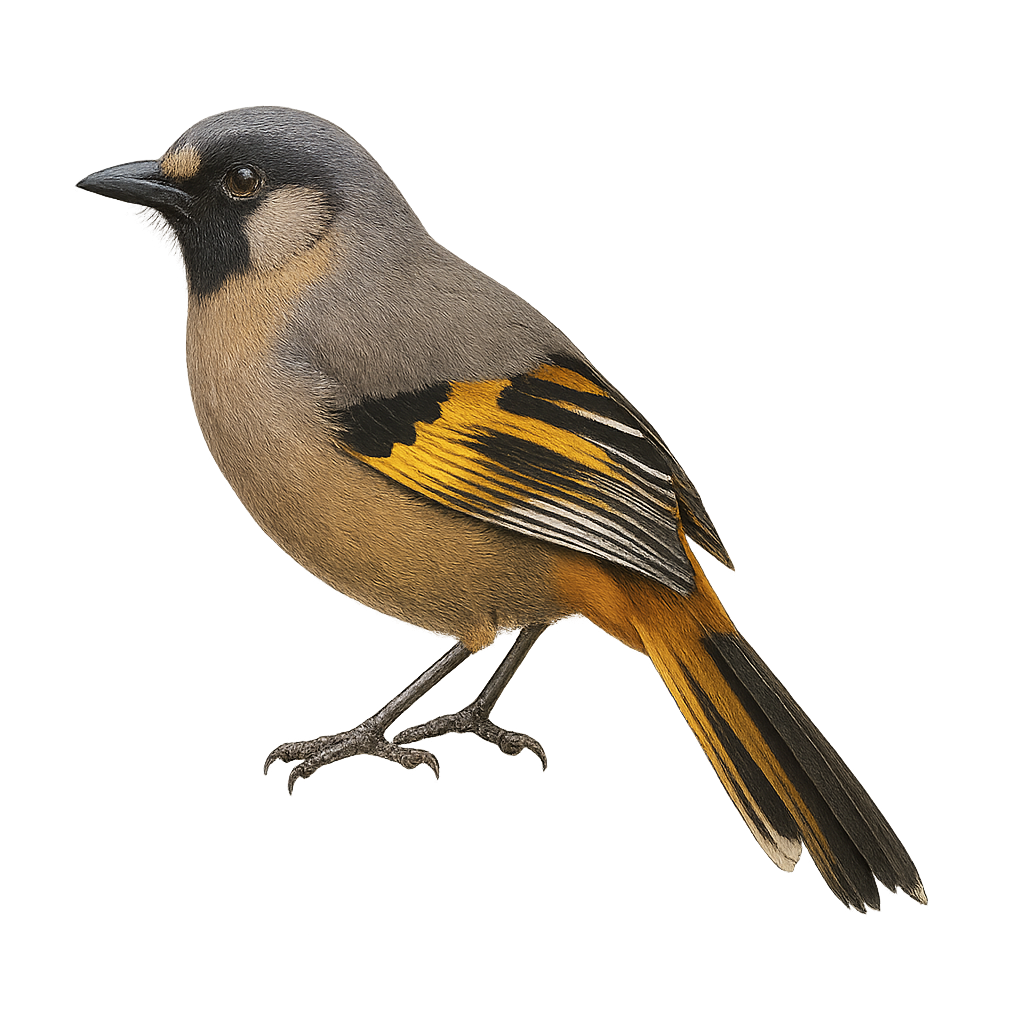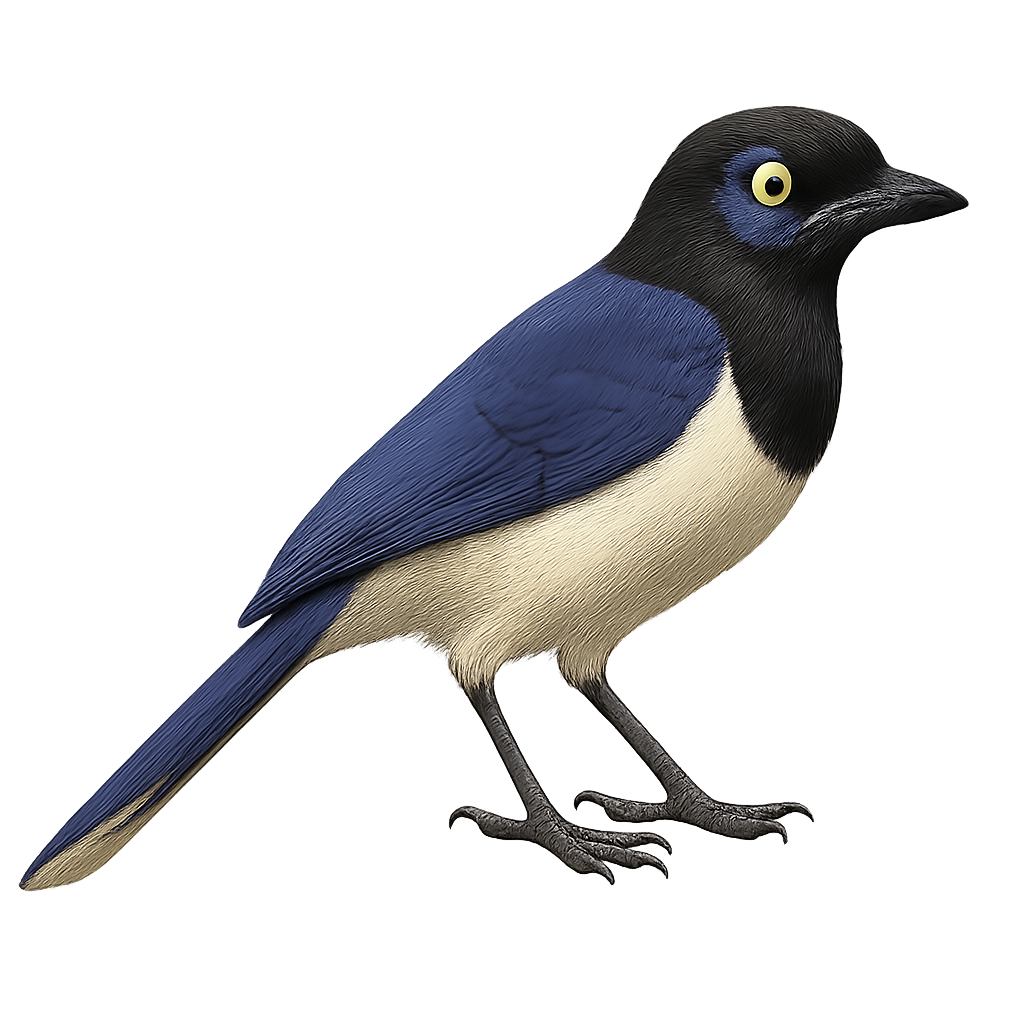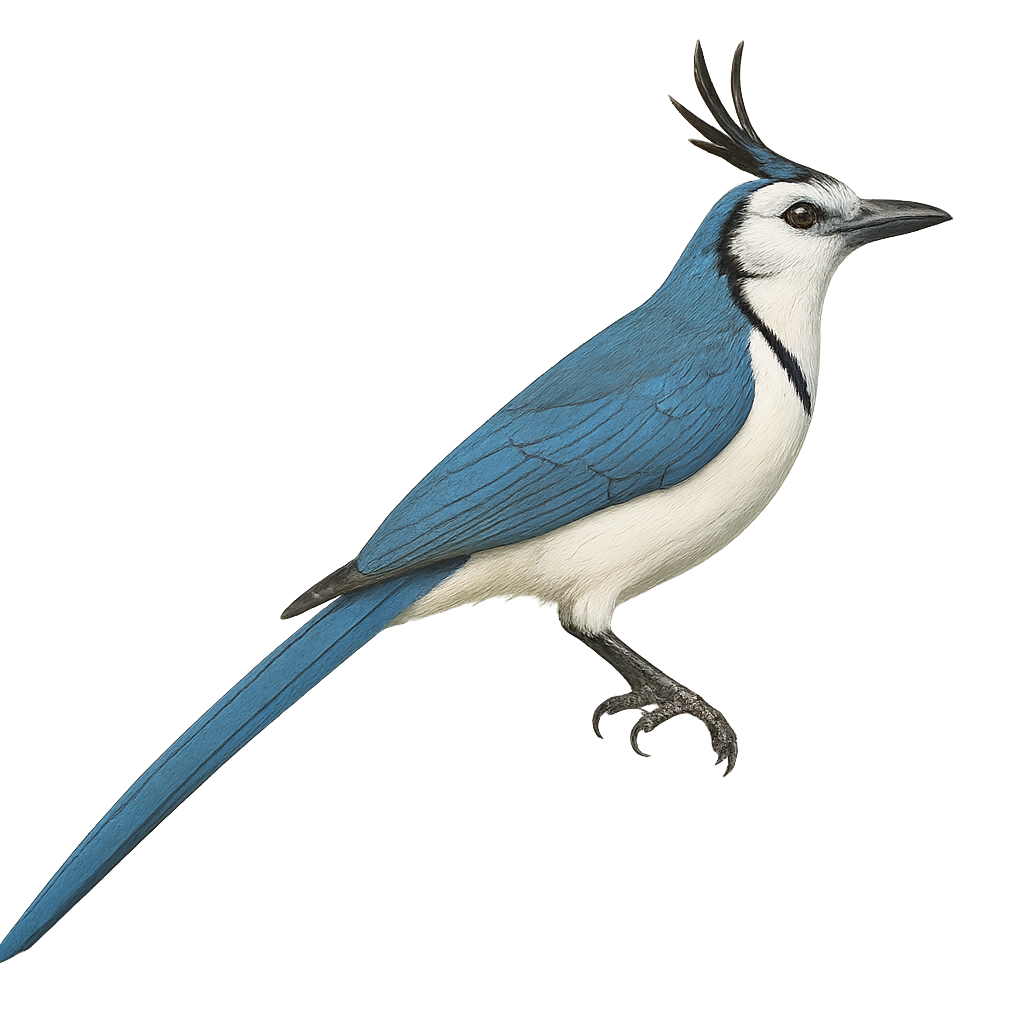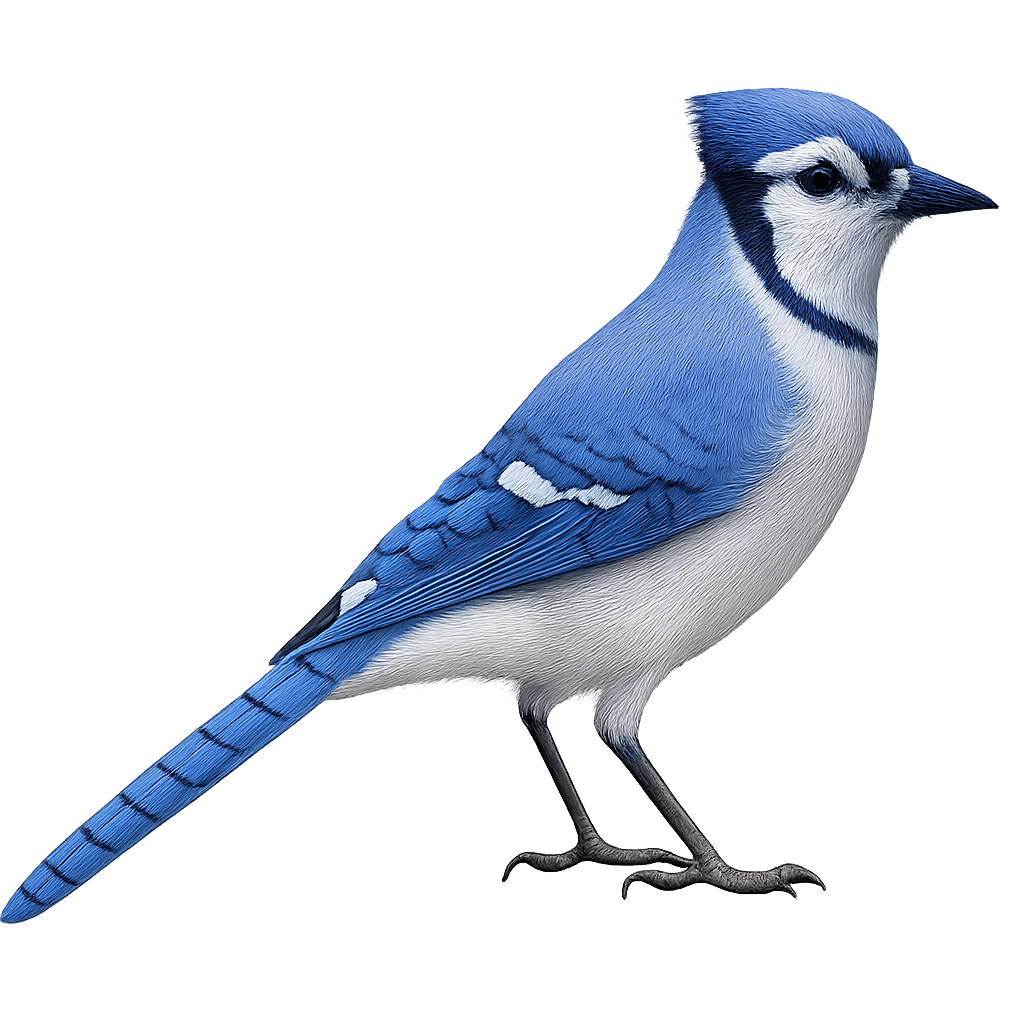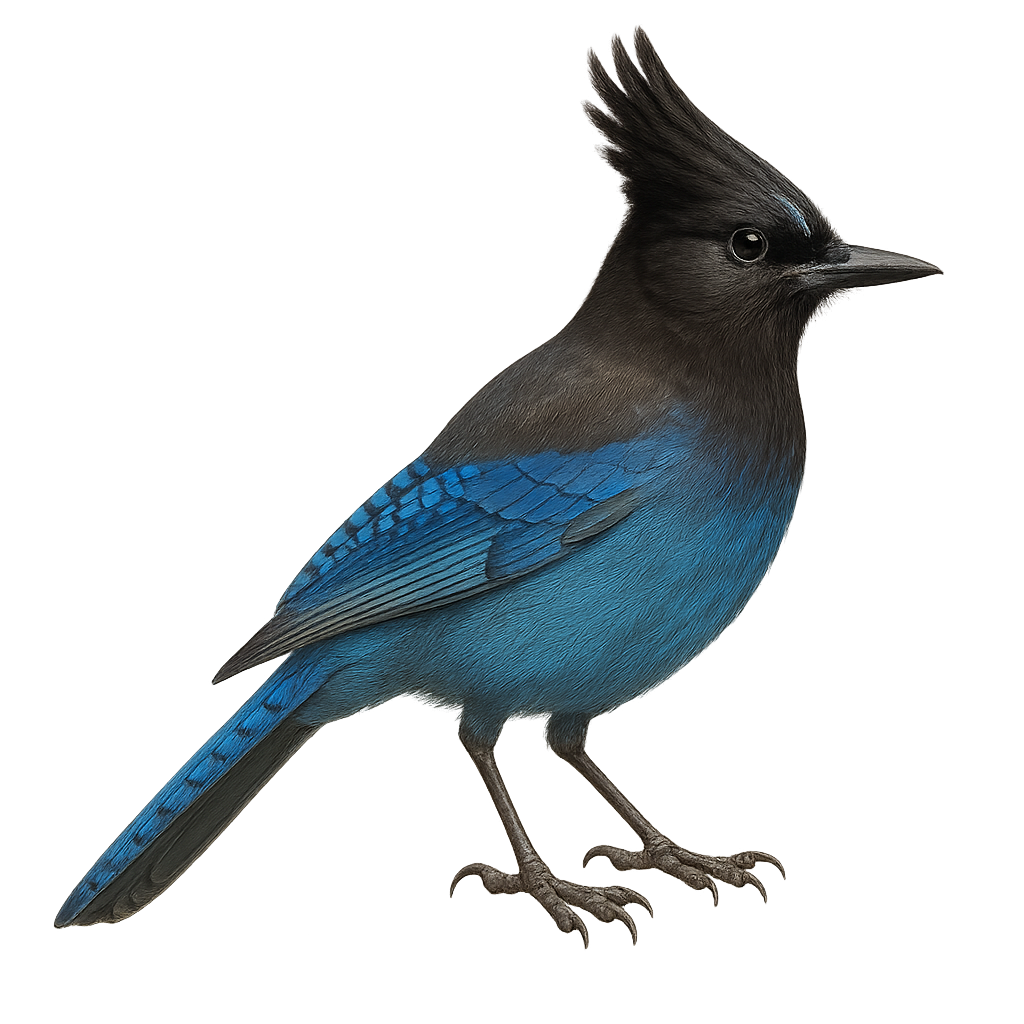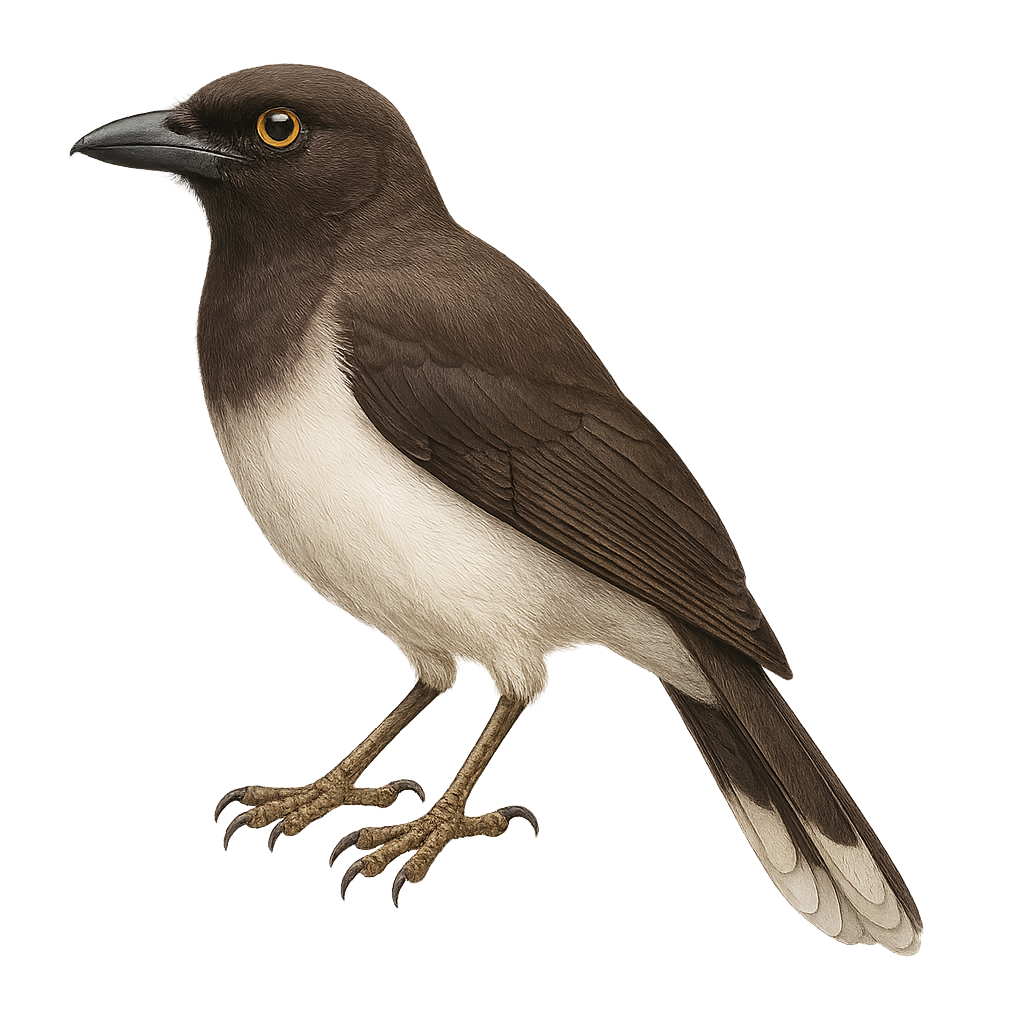The magnificent frigatebird is an impressive seabird, recognizable by its slender silhouette and long, sickle-shaped wings. Males display a bright red gular pouch, which they inflate to attract females. These birds are primarily black with metallic sheens, and females are distinguished by a white breast. They are often seen soaring above tropical oceans, using air currents to move effortlessly. Frigatebirds do not swim and cannot take off from water, so they feed by catching flying fish or harassing other birds to steal their prey. Their wingspan can reach up to 2.3 meters, making them masters of gliding flight.
The Ring-necked Duck, Aythya collaris, is a medium-sized diving duck known for its distinctive neck ring. Males display a striking black and gray plumage with a blue-gray bill marked by a white band, while females are browner with a white eye ring. They inhabit lakes and ponds across North America, feeding on aquatic plants, seeds, and invertebrates. Their flight is swift and direct, often in small flocks. Although generally wary, they can become accustomed to human presence in protected areas. Their population is stable, but habitat loss remains a potential threat.
The Canvasback, Aythya valisineria, is a North American diving duck known for its distinctive profile and elegant plumage. The male features a reddish head, white back, and black bill, while the female has more subdued brown-gray tones. These birds prefer large freshwater bodies, feeding mainly on aquatic plants, seeds, and invertebrates. Their flight is fast and direct, often in small groups. During the breeding season, they nest in marshes and wetlands, building floating nests among reeds. Populations migrate south in winter, reaching the United States and Mexico. Although their numbers have fluctuated, conservation efforts have helped stabilize their populations.
The Lesser Scaup, Aythya affinis, is a medium-sized diving duck known for its rounded head and grayish plumage. Males have a black head with purple sheen, gray back, and white belly, while females are duller with a brown head and a white ring around the bill. They primarily feed on mollusks, crustaceans, and aquatic plants. Their preferred habitats include lakes and ponds in North America, where they migrate in large flocks. Their flight is fast and direct, often in tight formation. Although common, their population is monitored due to environmental changes.
The Redhead is a medium-sized diving duck, easily identified by its reddish head, pale blue bill, and gray body. Males have a bright red head, gray back, and white belly, while females are duller with a brownish head and gray-brown body. They inhabit lakes, ponds, and marshes, favoring shallow freshwater. Their diet mainly consists of aquatic plants, seeds, and insects. During breeding season, they often nest in wet meadows or lake islands. Their flight is fast and direct, and they are often seen in large flocks during migration.
The Baer's Pochard, or Aythya baeri, is a rare and endangered diving duck native to East Asia. It is primarily found in China, Russia, and North Korea. This medium-sized duck, measuring about 41 to 46 cm in length, is characterized by its dark brown plumage, black head and neck, and white belly. Males have a striking red iris, while females have a brown iris. The Baer's Pochard prefers freshwater lakes, marshes, and ponds, where it feeds on aquatic plants, insects, and small mollusks. Unfortunately, habitat destruction and excessive hunting have led to a drastic decline in its population, classifying it as critically endangered by the IUCN.
The Common Pochard is a medium-sized diving duck, measuring between 42 and 49 cm in length. The male has a reddish-brown head, black breast, and light grey body, while the female displays a more subdued brown-grey plumage. This species inhabits lakes, ponds, and slow-flowing rivers rich in aquatic vegetation. It feeds mainly on aquatic plants but also consumes invertebrates. The Common Pochard is migratory, breeding in Europe and Asia, and wintering further south. It is currently classified as vulnerable due to population declines, primarily caused by habitat loss and pollution.
The scaup is a diving duck found primarily in lakes, ponds, and wetlands across Europe, Asia, and North America. It is easily recognizable by its contrasting black and white plumage, blue-green beak, and rounded head. This duck primarily feeds on aquatic plants and small invertebrates, which it captures by diving underwater. During the breeding season, it builds its nest in aquatic vegetation or near the shores.
The Tufted Duck is a medium-sized, elegant diving duck, measuring 40 to 47 cm in length. The male displays glossy black plumage with striking white flanks and a distinctive black tuft on the back of the head. The female is dark brown with paler flanks and a more modest tuft. Both sexes have a bluish-grey bill and bright yellow eyes. This species frequents lakes, ponds, reservoirs, and slow-moving rivers, often in flocks, and prefers areas rich in aquatic vegetation. It feeds mainly on mollusks, insect larvae, crustaceans, and aquatic seeds. A partial migrant, it is present year-round in temperate regions. Generally of Least Concern, though locally threatened by water pollution and wetland loss.
The Ferruginous Duck is a small diving duck measuring between 38 and 42 cm in length with a wingspan of 63 to 67 cm. The male has a dark chestnut plumage with white undertail coverts and distinctive white eyes. The female is duller brown with dark brown eyes. This species inhabits shallow lakes, marshes, and ponds rich in aquatic vegetation, preferring calm areas with dense reed beds. It feeds mainly on seeds and aquatic plants, supplemented by mollusks, aquatic insects, and small fish. The Ferruginous Duck is migratory, breeding in Eastern Europe and Asia, and wintering in North Africa, South Asia, and around the Mediterranean. Listed as Near Threatened by the IUCN, it faces habitat loss, pollution, and illegal hunting.
The Northern Fulmar, or Fulmarus glacialis, is a robust seabird often mistaken for a gull due to its grey and white plumage. However, it is stockier with a short, hooked bill. This bird is primarily found in Arctic and subarctic regions, nesting on coastal cliffs. Known for its graceful gliding flight, it can cover long distances at sea. The Northern Fulmar feeds mainly on fish, crustaceans, and marine waste. It is also famous for its olfactory defense, emitting a foul-smelling oil to deter predators. Although generally not very shy, it remains cautious of human intrusions.
The Pampusana stairi, commonly known as the Friendly Ground Dove, is a bird species endemic to the South Pacific islands, particularly Samoa and Tonga. This medium-sized pigeon is recognizable by its grey-blue plumage with metallic sheen on the wings and a white chest. It prefers dense forests and wooded areas, where it primarily feeds on seeds and fallen fruits. Though discreet, it plays a crucial role in seed dispersal, aiding forest regeneration. Its population is threatened by deforestation and the introduction of non-native predators, leading to its classification as a vulnerable species by the IUCN.
The Common Gallinule is a medium-sized waterbird, easily identified by its dark plumage and bright red bill with a yellow frontal shield. It primarily inhabits marshes, ponds, and lakes with dense vegetation. Agile and discreet, it feeds on aquatic plants, insects, and small fish. Although often solitary, it can be seen in small family groups. Its distinctive call, a sharp croak, often echoes at dusk. The Common Gallinule is an adaptable bird, capable of settling in various aquatic environments, contributing to its wide geographical distribution.
The Eurasian moorhen is an aquatic bird found mainly in wetlands, marshes, lakes, and rivers across Europe, Asia, and North Africa. It is easily recognized by its dark plumage, bright red and yellow beak, and prominent forehead. This aquatic passerine primarily feeds on aquatic plants, small invertebrates, and insects. The moorhen is also known for its discreet behavior and tendency to hide in dense vegetation.
The Pterocles decoratus, commonly known as the Black-faced Sandgrouse, is a medium-sized bird belonging to the Pteroclidae family. It is primarily found in the arid and semi-arid regions of East Africa, particularly in Kenya and Tanzania. This bird is distinguished by its cryptic plumage, which allows it to blend into its sandy environment. Males feature a characteristic black face, contrasting with the rest of their brown and beige plumage. Females are duller, providing additional camouflage during nesting. Black-faced Sandgrouse primarily feed on seeds and are often observed in groups near water sources, especially at dawn and dusk.
The Pin-tailed Sandgrouse, or Pterocles alchata, is a medium-sized bird belonging to the Pteroclidae family. It is recognizable by its cryptic plumage, which allows it to blend into its desert environment. Males have more colorful plumage with distinctive patterns on the chest and wings, while females are duller. This bird is primarily granivorous, feeding on seeds found in arid and semi-arid areas. It is often seen in small groups, especially near water sources where it comes to drink. The Pin-tailed Sandgrouse is a partial migrant, moving according to resource availability. It is known for its fast, direct flights, often at low altitudes.
The Pterocles coronatus, or crowned sandgrouse, is a medium-sized bird known for its sandy-brown plumage, which provides excellent camouflage in desert landscapes. Its head is adorned with a distinctive crown, giving it its name. This bird is primarily found in the arid regions of North Africa and the Middle East. It is well adapted to dry environments, capable of traveling long distances in search of water. Crowned sandgrouse feed mainly on seeds and small insects. They are often seen in groups, flying swiftly and at low altitudes. Their social behavior is fascinating, with elaborate courtship rituals.
The Pterocles orientalis, or black-bellied sandgrouse, is a medium-sized bird known for its cryptic plumage that blends seamlessly into arid landscapes. Males feature a distinctive black belly, contrasting with their sandy-brown plumage. Females are duller, providing effective camouflage during nesting. This bird is primarily terrestrial, feeding on seeds and dry vegetation. It is often seen in flocks, especially around water sources at dawn and dusk. Its flight is swift and direct, often accompanied by noisy wingbeats.
The Common Goldeneye is a medium-sized diving duck, measuring about 42 to 50 cm in length. The breeding male has a glossy dark green head, a distinct white spot below the eye, and a bright yellow eye. The female is brown with a chocolate-colored head and a subtle white collar. It inhabits lakes, slow rivers, and coastal bays in Europe, Asia, and North America. A migratory species, it nests in tree cavities or artificial nest boxes. Its diet includes mollusks, crustaceans, aquatic insects, and small fish. Though generally of Least Concern, it may be impacted locally by the loss of natural nesting sites.
The smew is a small diving duck, 38–42 cm long, with the male’s striking black-and-white plumage and the female’s more subdued brownish tones. It inhabits lakes, ponds, and calm rivers with riparian vegetation in boreal and temperate regions. An expert diver, it feeds on small fish and aquatic invertebrates.
The Barrow's Goldeneye is a medium-sized diving duck, easily identifiable by its rounded head and distinctive black and white plumage. Males have a black head with purple iridescence and bright yellow eyes, while females have a chocolate-brown head with a white eye ring. They breed primarily in the northern regions of North America and Iceland, favoring lakes and rivers bordered by forests. In winter, they migrate to milder coastal waters. Their diet mainly consists of mollusks, crustaceans, and aquatic insects. Although they are relatively tolerant, they can be suspicious of humans.
The Rufous-chinned Laughingthrush is a medium-sized bird belonging to the Leiothrichidae family. It is primarily found in the mountainous forests of Southeast Asia, particularly in China, Myanmar, and Thailand. This bird is recognizable by its olive-brown plumage with shades of gray and rufous, especially around the throat and cheeks. It usually lives in groups and is known for its varied and melodious vocalizations. The Rufous-chinned Laughingthrush feeds mainly on insects, fruits, and seeds. Although it is relatively common in its natural habitat, deforestation poses a potential threat to its populations.
The White-crested Laughingthrush is a sociable and noisy bird, often seen in groups in the dense forests of Southeast Asia. It is distinguished by its striking white crest contrasting with its brown and black plumage. This bird measures about 28 to 30 cm in length and has a sturdy beak suited to its omnivorous diet. It primarily feeds on insects, fruits, and seeds. Its call is a mix of laughs and cries, making it easily identifiable. The White-crested Laughingthrush is a resilient bird that adapts well to environmental changes, although it is sometimes threatened by deforestation.
The Trochalopteron variegatum, known as the variegated laughingthrush, is a richly colored bird primarily found in the mountainous forests of the Himalayas. Its plumage features a combination of gray, brown, and white, with distinctive patterns that make it easily recognizable. This bird is often seen in small groups, moving through the underbrush in search of food. It primarily feeds on insects, fruits, and seeds. Its song is melodious and varied, earning it the name "laughingthrush" in English. Although relatively common in its natural habitat, it remains discreet and can be difficult to spot due to its wary behavior.
The Cyanocorax affinis, or White-throated Magpie-Jay, is a striking bird known for its vivid blue plumage and distinctive white face with a black crest. It is primarily found in Central America, particularly in Costa Rica and Panama. This social bird lives in family groups and is noted for its intelligence and ability to mimic sounds. It inhabits tropical dry and humid forests, forest edges, and cultivated areas. The White-throated Magpie-Jay is omnivorous, feeding on fruits, insects, and occasionally small vertebrates. Its curious behavior and adaptability to human-altered environments make it a fascinating species to observe. Although not currently threatened, deforestation could impact its populations in the long term.
The White-throated Magpie-Jay, Cyanocorax formosus, is a striking bird with a long tail and vibrant blue plumage contrasting with a black face. It primarily inhabits dry tropical forests and wooded areas in Mexico and Central America. This sociable bird lives in family groups and feeds mainly on insects, fruits, and seeds. Its distinctive and varied call is often heard before it is seen. Although its habitat is threatened by deforestation, it remains relatively common within its range. The White-throated Magpie-Jay is a fascinating example of the avian diversity of the Neotropical region.
The Blue Jay, Cyanocitta cristata, is a striking bird with predominantly blue plumage accented with white and black. Easily recognizable by its distinctive crest and loud call, this bird is omnivorous, feeding on seeds, insects, and occasionally small vertebrates. It is commonly found in deciduous and mixed forests, as well as urban parks and gardens. Known for its intelligence, the Blue Jay can mimic sounds, including the calls of other birds. It plays a crucial role in seed dispersal, aiding forest regeneration.
The Steller's Jay, with its striking blue plumage and distinctive black crest, is a fascinating bird of the coniferous forests of western North America. Measuring about 30 to 34 cm in length, it is distinguished by its black head and bright blue body. This bird is known for its bold and curious behavior, often seen foraging on the ground for food or skillfully flying between trees. Omnivorous, it feeds on seeds, fruits, insects, and even small animals. The Steller's Jay is also an excellent mimic, capable of reproducing the calls of other birds and even some human sounds.
The Japanese Jay is a medium-sized bird known for its colorful plumage and distinctive crest. It features a mix of colors from pinkish-brown to bright blue on the wings, with black and white markings. This bird is primarily arboreal, inhabiting deciduous and coniferous forests in Japan. It is known for its intelligence and ability to mimic sounds. Omnivorous, it feeds on acorns, insects, and small animals. The Japanese Jay plays a crucial role in seed dispersal, aiding forest regeneration.
The Brown Jay, or Cyanocorax morio, is a bird from the Corvidae family, primarily found in Central America. It is characterized by its dark brown plumage, contrasting with lighter wings and tail. Its head features a black mask around the eyes and a strong beak. This sociable bird lives in family groups and is often seen in tropical forests, mangroves, and open woodlands. Opportunistic, it feeds on fruits, insects, and sometimes small vertebrates. Its call is loud and varied, used to communicate with its peers. The Brown Jay plays a crucial role in seed dispersal, aiding forest regeneration.


